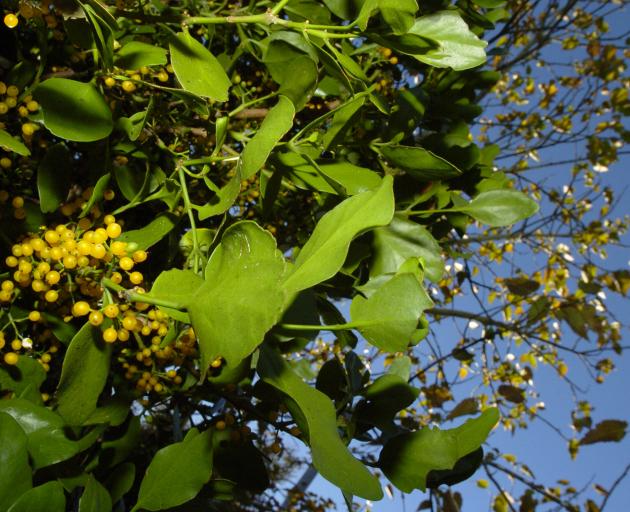
Native mistletoes conserved in garden, dwindle in wild
During winter, when deciduous trees around Dunedin have lost their leaves, blobs of incongruous evergreen foliage can be spotted high up in bare branches. The blobs are Ileostylus micranthus, a native green mistletoe.
Ileostylus, with shiny green leaves spreading to about 1m, is widespread in Dunedin Botanic Garden. Its nutrient and water-sucking roots attach to a variety of host species ranging from birch to cabbage tree.
Other wild mistletoes in the botanic garden require an even keener eye. Korthalsella lindsayi is a dwarf species, about 5cm long. Instead of leaves it has flattened, jointed stems. In the native plant collection is a Lophomyrtus tree with Korthalsella growing all over it — once you get your eye in, you start to differentiate tufts of small, succulent stems from the rounder leaves of the Lophomyrtus.
New Zealand has eight species of mistletoe. The two mentioned above are doing well, but the others are all at risk in the wild or declining due to habitat destruction, rat and possum browse and loss of bird pollinators and dispersers. A ninth species, Trilepidea adamsii, is presumed extinct as it hasn’t been seen since 1954.
Botanic gardens are places to preserve populations of rare species. Seed of yellow beech mistletoe (Alepis flavida) and of rare, declining local Tupeia antarctica have been trialled by researchers on appropriate host trees in Dunedin Botanic Garden plant collections.
- Garden Life is produced by Dunedin Botanic Garden.